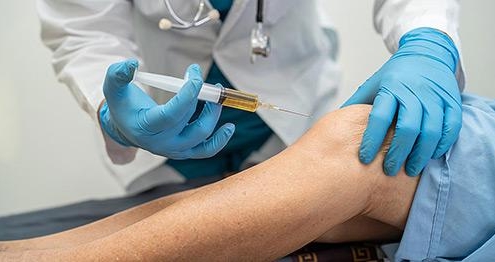Platelet Rich Plasma

Overview
Platelet Rich Plasma (PRP) is not a condition in itself, but a form of treatment that is used for a range of medical conditions and cosmetic procedures. PRP therapy involves using the patient’s own blood platelets to promote healing and regeneration in damaged body tissue. The procedure harnesses the body’s natural healing abilities, making it a popular choice for those seeking an alternative to surgical treatments.
Types
There are primarily two types of PRP:
1. Leukocyte-Rich PRP (L-PRP): This type of PRP also contains white blood cells, which are part of the body’s immune system and play a role in fighting off infections. Some researchers believe that L-PRP may offer better healing properties than other types of PRP.
2. Leukocyte-Poor PRP (P-PRP): Unlike L-PRP, this type of PRP doesn’t include many white blood cells. It primarily consists of plasma and a high concentration of platelets.
Depending on the patient’s needs and specific medical condition, healthcare providers may recommend one type of PRP over the other.
Causes
There are no causes for Platelet Rich Plasma therapy in itself, as it’s a form of treatment. However, the conditions that PRP may be utilized for include various sorts of injuries, chronic diseases, and aging related issues.
Symptoms
As PRP is a treatment, there aren’t symptoms associated with it directly. Nevertheless, the therapy is often used for conditions that present a wide array of symptoms such as pain, inflammation, difficulty in healing wounds, hair loss, joint dysfunction, and skin aging.
Diagnosis
Before PRP treatment is suggested, a thorough diagnosis of the individual’s condition is carried out. This may involve physical examinations, reviewing medical history, and conducting necessary tests. Depending on the condition, the diagnostic procedure varies.
Treatment Options
PRP therapy is conducted by extracting a small amount of the patient’s blood, processing it to concentrate the platelets in the plasma, and then injecting it into the area requiring treatment.
The applications of PRP are diverse, ranging from orthopedics, sports medicine, and physiotherapy to dermatology and cosmetology. Some common conditions where PRP is used are:
– Osteoarthritis of the Knee, Shoulder, Hip and Spine
– Rotator Cuff Tears
– Chronic Plantar Fasciitis
– ACL Injuries
– Hair Loss
– Tendonitis
– Wrinkles, Scars and Stretch Marks
Living With Platelet Rich Plasma
The entire PRP process – from blood draw to the injection, usually takes less than an hour. Post-treatment, patients typically return to their normal activities pretty quickly. However, the treated area may be sore for a few days and would need rest. For symptomatic relief, over-the-counter painkillers can be used.
Patients undergoing PRP therapy should stay hydrated and maintain a healthy diet for optimal healing. Regular exercises as prescribed by the healthcare provider may also be part of the aftercare.
When to Seek Help
After PRP treatment, it’s normal to experience some swelling and slight discomfort. However, if pain or swelling increases, or if symptoms such as fever, redness, warmth in the area of the injection, or other signs of infection are observed, it’s important to seek immediate medical attention.
